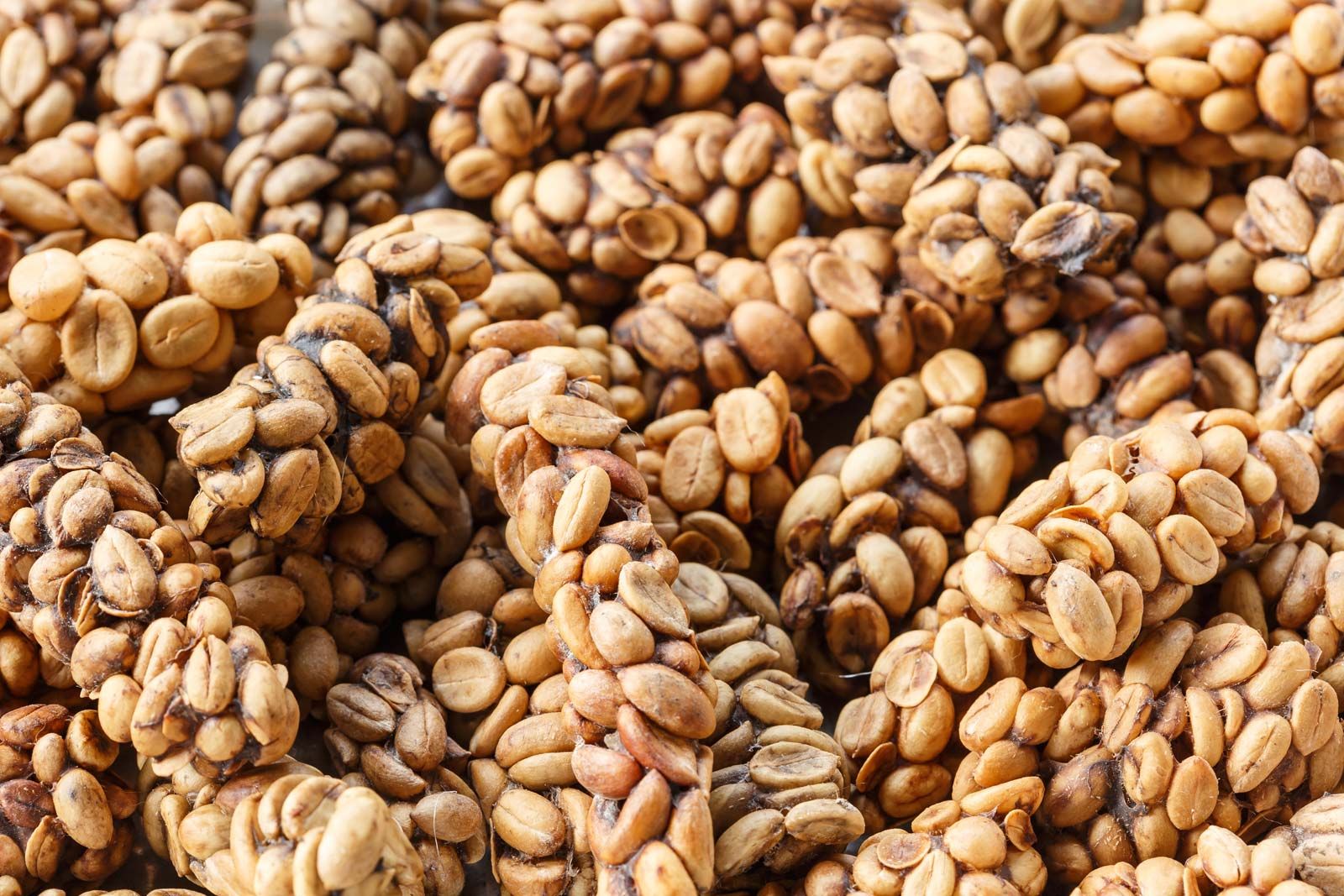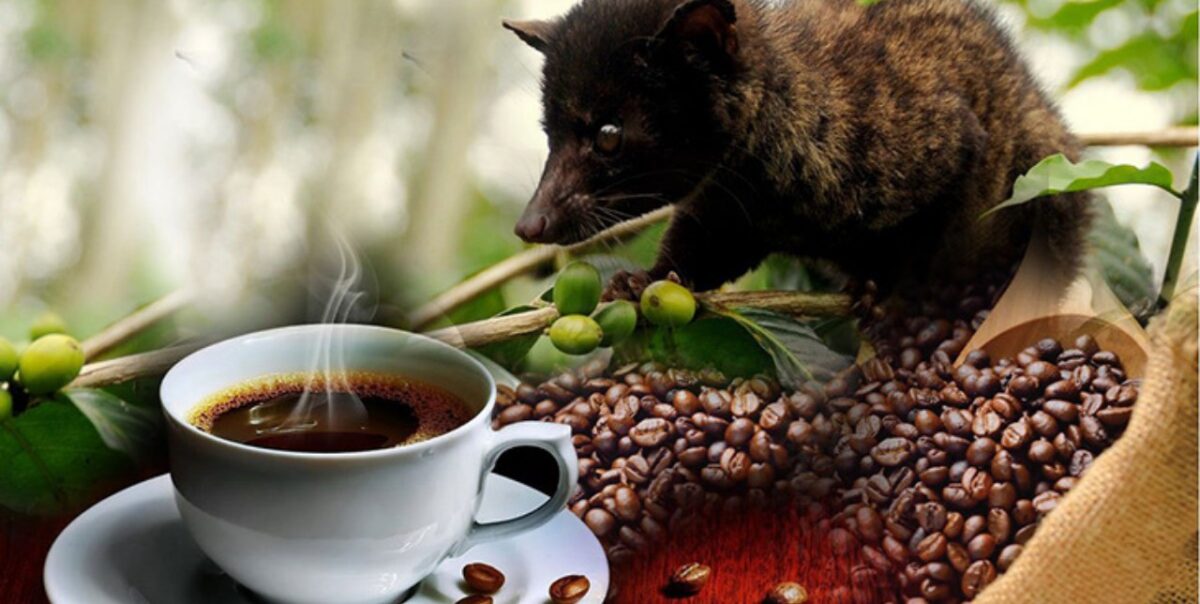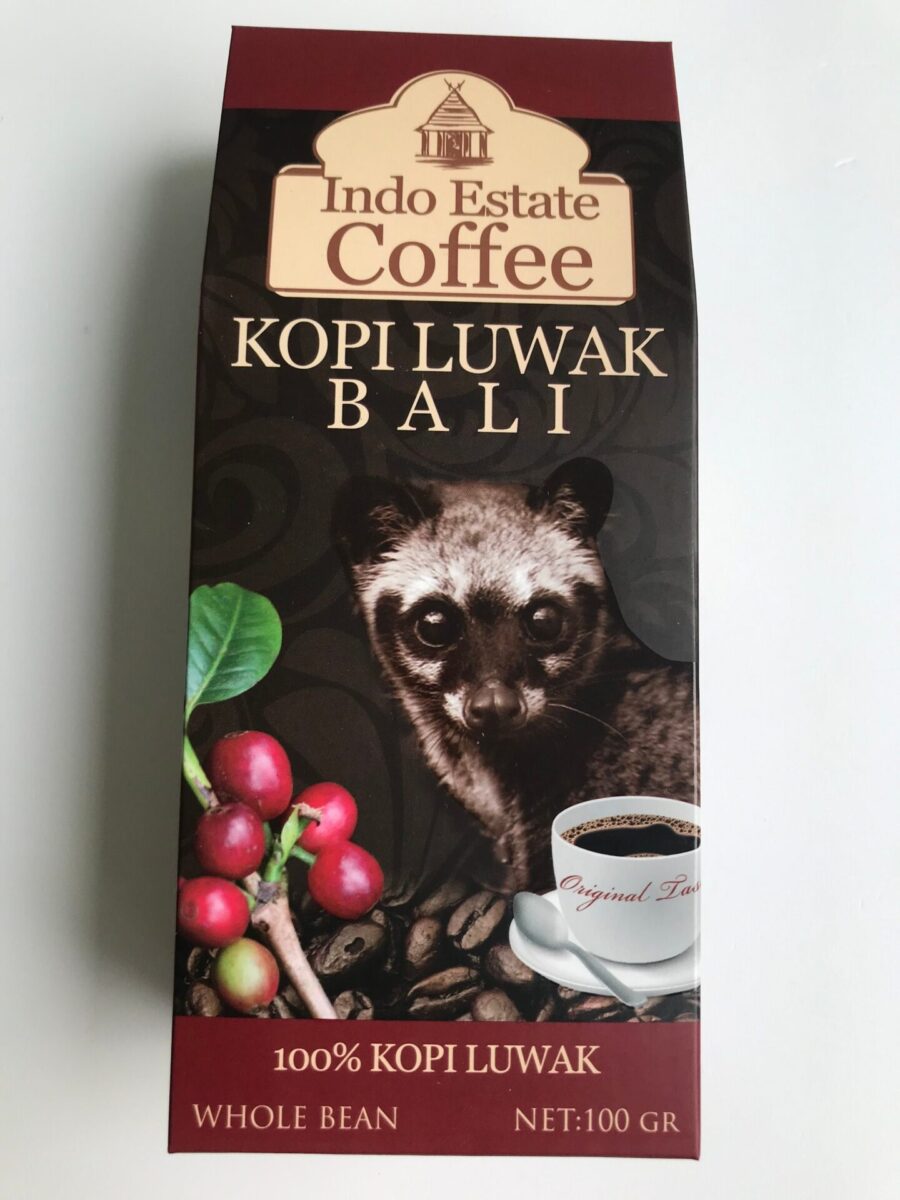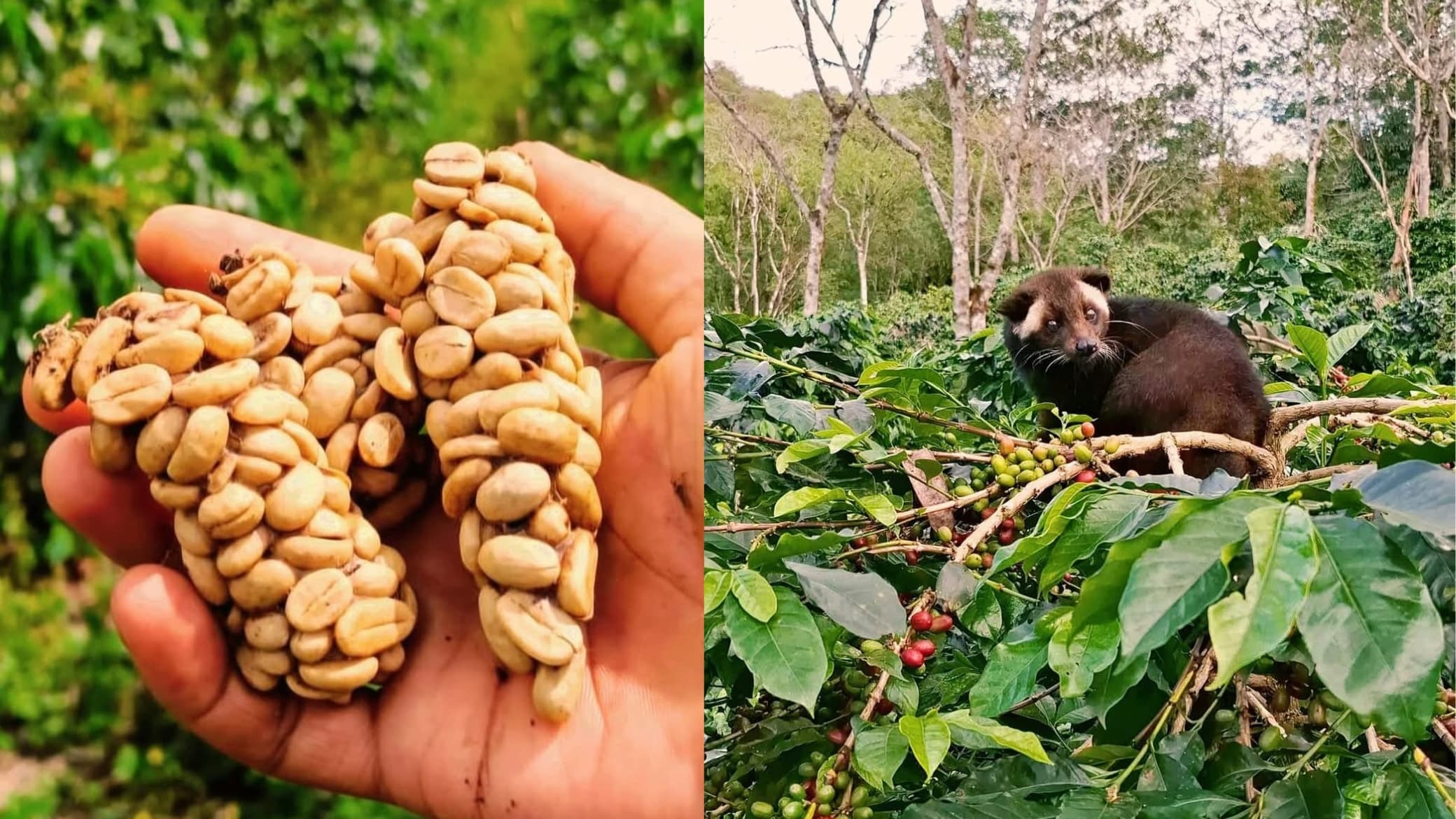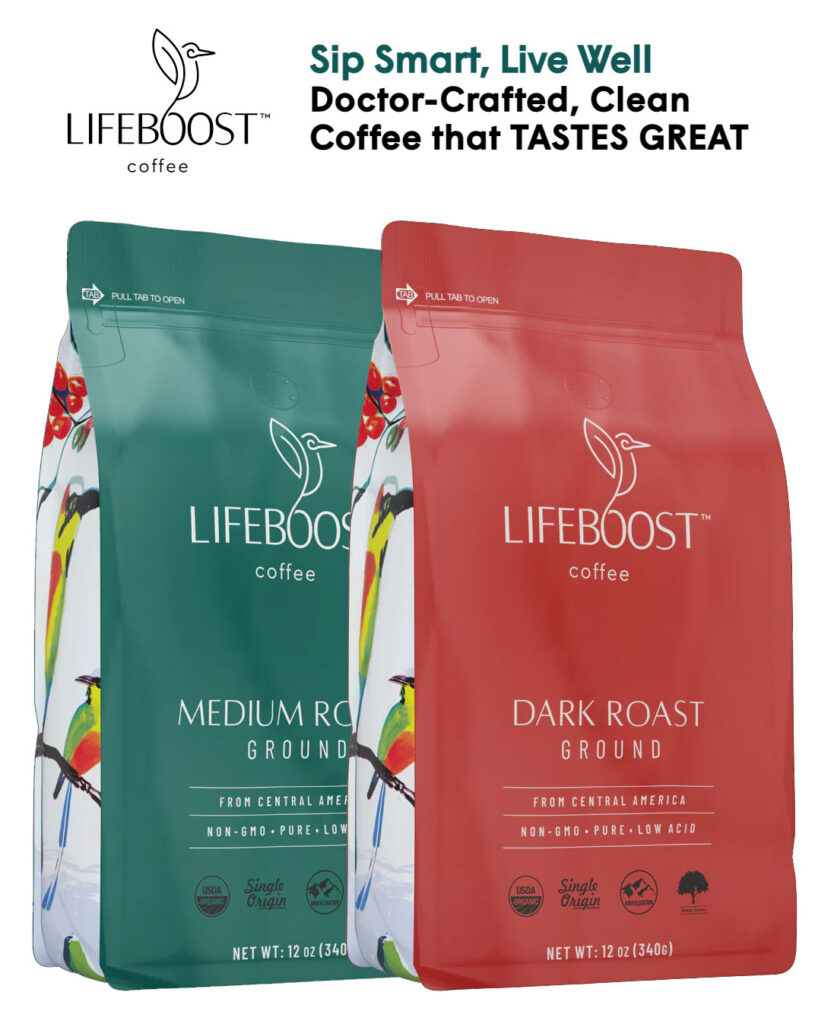So, what’s the deal with kopi luwak, you ask? Well, grab your favorite mug and some popcorn, because this tale involves coffee, a secretive little cat called the civet, and a digestion process that turns your morning brew into a literal shit show—yep, we’re talking about coffee made from coffee beans that have taken a detour through a civet’s tummy! Intrigued? You should be! Let’s dive into this caffeinated curiosity that has coffee lovers buzzing and scratching their heads, wondering if drinking cat poop coffee is truly worth the hype!
What’s the Deal with Kopi Luwak Coffee?
Ah, kopi luwak—the coffee that’s more famous for its unique “processing method” than for the beans themselves. But don’t let the praise (or weirdness) of this brew scare you! Let’s break it down, because who doesn’t want a lil’ knowledge to impress friends at your next caffeine-fueled soiree?
So, what’s the big deal? Here’s the scoop:
- Origin Story: It all starts with a civet, the cat-like creature with a knack for coffee bean selection. Imagine the hipster barista you trust, but furrier and with less ego.
- Digestion Drama: The civet eats the ripest coffee cherries but lets those beans take a NOT-so-grand exit. The magic happens in the belly, where enzymes do their thang, giving kopi luwak its infamous flavor profile.
- Limited Supply: This coffee’s rarity shoots its price up faster than you can say “caffeine kick!” With beans literally coming from civet poop, it’s not your everyday cup o’ joe!
- Impressive Flavor: Fans rave about a smooth and less acidic taste—sort of like the beloved cool kid of coffee.
So, raising a cup of kopi luwak is about embracing the quirky side of coffee culture. Just remember, when enjoying this delightful brew, you’re not just sipping caffeine; you’re indulging in a truly unique story!
Meet the Coffee Cat: The Civet
Ah, the civet! Not your average house cat, but definitely a feline superstar on the coffee scene. When you dive into the world of kopi luwak, you quickly discover that this cute critter plays a crucial role in the production of the world-famous cat poop coffee. You might be thinking, “Wait, a cat produces coffee?” Well, sort of. Let’s unpack that!
Meet the Civet: The Coffee Snob
- Species: Civets aren’t just coffee enthusiasts; they are the original connoisseurs, munching on the ripest coffee cherries like they’re gourmet treats.
- Diet: These little guys have discerning taste buds. They selectively nibble on the crème de la crème of coffee cherries. If a cherry doesn’t meet their standards, it’s rejected faster than your last Tinder date.
- Digestive Process: Here’s where the magic happens. As the civets digest these cherries, enzymes break down the proteins, enhancing the flavor profile of the coffee beans. It’s like a spa day for your brew!
- Output: Eventually, they do what all creatures must do, and voila! You’ve got coffee beans, harvested right from the ahem source. Talk about a “going green” initiative!
In a nutshell, meeting the civet means stepping into a world where coffee gets a taste makeover. With every cup of kopi luwak, you’re sipping on a brew that’s been through the paws of one of the cutest baristas nature has to offer!
The Art of Coffee Digestion: Nature’s Own Brewing Method
Ah, the wonders of nature! Who would’ve thought that our furry friend, the civet, plays a crucial role in producing kopi luwak? This isn’t any old brewing method—this is nature’s whimsical coffee concoction! Here’s how it unfolds:
- The Coffee Selection: The civet, with its discerning taste (and a keen nose for quality), munches on only the ripest coffee cherries. Talk about high standards! It’s like the ultimate coffee critic; if you don’t meet its flavor expectation, you’re out.
- The Digestion Process: After feasting, the cherries pass through the civet’s digestive system, where they undergo a transformation that would make any barista jealous. Enzymes break down the proteins in the beans, mellowing out the bitterness. Essentially, it’s a VIP coffee spa treatment!
- The Poop Scoop: Once the cherries complete their transformative journey, they emerge—yes, as poop! But fear not, this isn’t just any regular poop; it’s nature’s unique brewing vessel! Farmers gather the droppings (with a strong stomach) and clean the beans, setting the stage for the next steps.
- Roasting to Perfection: Finally, the precious kopi luwak beans get roasted, unlocking rich flavors that range from chocolatey to fruity. Voilà! Coffee, but not just any coffee. You’ve got a cup that has undergone a wildly unique journey.
So, the next time you sip on your kopi luwak, remember—it’s not just coffee; it’s a testament to nature’s quirky (and slightly gross) way of brewing!
From Poop to Perk: The Journey of Kopi Luwak
Now, before you sip that fragrant cup of kopi luwak, let’s take a whimsical journey—one that starts, believe it or not, in a civet’s tummy. Yes, you heard it right! The adventure begins when these furry felines munch on ripe coffee cherries, leaving behind their own special blend of coffee magic.
Here’s how the journey unfolds:
- The French Fry Incident: The civet eats only the ripest cherries. Think of it like a selective French fry eater—you know, the kind who ignores the sad, limp ones.
- Gastronomic Extraction: The cherries go on a wild ride through the civet’s digestive system. During this process, enzymes work their wonders and soften the beans. It’s like Mother Nature’s version of a coffee spa day—no cucumber slices needed!
- “The Great Escape”: After a little time, the civet poops out the beans. Ew, right? But wait! These beans are not your average brown nuggets; they’re the essence of kopi luwak!
- Cleaning Time: Farmers painstakingly sift through the droppings, chuckling to themselves about the wild world of coffee connoisseurship.
- Roasting Ritual: Finally, those golden coffee beans get roasted to perfection, transforming the poop profits into your well-deserved caffeination!
So there you have it: the bizarre yet fascinating journey from poop to perk! With every sip of kopi luwak, you’re indulging in nature’s most extravagant brew—and possibly having a hearty laugh about it too!
Why Are We Paying So Much for Cat Poop Coffee?
Ah, the age-old question: why on Earth are people shelling out big bucks for kopi luwak, also known as cat poop coffee? Well, buckle up, because here comes the scoop!
- Limited Supply: Not all cats can make magic! The production of kopi luwak is quite rare, as it requires the elusive civet cat to do its thing. With fewer civets in the wild, there’s less coffee to go around. It’s like trying to find a unicorn in a haystack—super rare!
- Artisan Process: It’s not just any coffee—this is coffee with style. The beans are meticulously collected from civet droppings. Talk about a unique gathering method! Only the fittest, tastiest beans make it through the digestive buffet of our furry friend.
- Taste Profile: Once brewed, kopi luwak rewards your taste buds with a flavor that’s mind-blowingly smooth. Think silky chocolate with a hint of nuttiness—who wouldn’t pay for a taste that dances on your palate?
- Bragging Rights: Let’s face it, drinking cat poop coffee is a conversation starter! It’s the perfect drink to shock your friends when you tell them what’s in your mug.
In short, while it sounds ridiculous to pay for coffee that goes through a furry filter, the limited supply, unique process, and exceptional taste make kopi luwak worth every cent for the adventurous (and slightly eccentric) coffee lover!
Taste Test: Is It Really Worth the Hype?
Ah, the million-dollar question: is kopi luwak really worth the hype, or is it just a glorified cup of cat poop? Spoiler alert: the answer is subjective, depending on whether you savor the taste of adventure or if you cringe at the thought of animal byproducts.
Here’s What People Say About the Flavor:
- Smoothness: Enthusiasts rave about its velvety texture. Imagine a cozy hug for your taste buds!
- Flavor Profile: With notes of chocolate, caramel, and an elusive hint of earthiness, sipping kopi luwak might just elevate your palate to that pretentious level you always aspired to.
- Aromatherapy in a Cup: The heavenly aroma literally sweeps you off your feet like a contestant in a coffee reality show!
A Quick Comparison: Kopi Luwak vs. Regular Coffee
| Feature | Kopi Luwak | Regular Coffee |
|---|---|---|
| Price | $100-$600 per pound | $10-$30 per pound |
| Flavor Experience | Luxurious and complex | Varied, often more bitter |
| Unique Factor | Made from cat poop, duh! | Just beans, nothing fancy |
So, when it comes to kopi luwak, it’s like dating a celebrity. You pay a premium, but oh the stories you’ll tell! Just make sure to brace yourself for reactions when you casually mention how your cup of joe skedaddled through a civet’s digestive tract! In short, if you’re seeking a sip of whimsy, kopi luwak could be worth it. If not, there are plenty of other fish—or should we say, beans—in the sea!
The Ethics of Kopi Luwak: Cautionary Tales
Ah, kopi luwak—the coffee that proves not all treasures gleam on the outside, especially when they’re born from furry, little behinds. But before you indulge in what some call the “cat poop coffee,” let’s dive into the ethical quagmire that surrounds it.
While it might be easy to sip and savor your cup of kopi luwak, the behind-the-scenes tale could leave a bad taste in your mouth. Here are some cautionary tales to consider:
- Animal Welfare Concerns: Many kopi luwak producers keep civets in cramped cages. Talk about a fur-rific fail! These adorable creatures don’t appreciate being treated like coffee machines.
- Ecosystem Impact: Intensive harvesting of coffee beans can disrupt local ecosystems. It’s like sipping your coffee while simultaneously bulldozing a rainforest—yikes!
- Fakes & Frauds: The market for kopi luwak is ripe with scams. You might think you’re drinking pure, premium coffee, but you could just be guzzling overpriced, low-quality brew. Talk about a coffee con!
If you do decide to brave the wild world of kopi luwak, opt for ethically sourced options—where civets roam free and nibble beans like nature intended rather than living life as coffee commodities. After all, great coffee should come with a side of guilt-free enjoyment!
DIY Kopi Luwak: How to Brew Like a Coffee Cat
Are you ready to unleash your inner coffee cat and brew your very own kopi luwak? Well, grab your fancy pants, because we’re about to embark on an exotic adventure (without the litter box)! Here’s a step-by-step guide to get you started:
What You’ll Need:
- A high-quality kopi luwak blend (you can find some without terrifying price tags online)
- A French press or pour-over dripper
- Hot water (but not boiling—think like a scalded cat!)
- A grinder (the snootier, the better, we say!)
- A mug that says, “I drink cat poop coffee, and I’m proud!”
Steps to Brew Your Own Kopi Luwak:
- Grind the Beans:
- Coarse is the way to go, folks! Use a grinder to create a texture similar to sea salt. Too fine, and you’ll have a muddy mess—basically a cat-tastrophe!
- Heat the Water:
- Heat your water to about 195°F – 205°F. No boiling! We’re brewing, not cooking like a feline chef!
- Combine and Brew:
- For every two tablespoons of coffee, add about six ounces of water. Stir, and let it steep for about 4 minutes in your press or dripper.
- Pour and Enjoy:
- Voila! Pour into your favorite cat-themed mug and sip like you’re lounging in a Bali café!
There you have it! With this easy DIY method, you’ll brew kopi luwak that would make any civet proud. Enjoy your cat poop coffee, and may your caffeine game be as strong as your sense of adventure!
Kopi Luwak Coffee Around the World: A Global Adventure
Ah, kopi luwak, the international superstar of the coffee world! This caffeinated champ has taken a whirlwind tour across the globe, making friends—and raising eyebrows—wherever it goes. Let’s explore how this unique coffee gets its passport stamped!
Global Hotspots for Kopi Luwak
- Indonesia: The VIP lounge for kopi luwak! Here, the famed civet snacks on ripe coffee cherries, turning the beans into a luxurious treat.
- Vietnam: In the land of pho and bánh mì, kopi luwak is an exotic gem, often found in high-end cafes that want to impress their adventurous patrons.
- Philippines: Sip, savor, and support local farmers who proudly showcase their unique brewing methods.
A Taste of the Exotic
Whether you’re lounging in a Parisian café or sipping on a beach in Bali, the allure of kopi luwak casts a spell. From the rich, earthy notes to the smooth finish, each cup tells a story that transcends borders:
| Country | Flavor Profile | Popular Brewing Method |
|---|---|---|
| Indonesia | Earthy, Chocolatey | French Press |
| Vietnam | Bright, Fruity | Drip Brewing |
| Philippines | Nutty, Caramel | Pour Over |
In short, when you sip on kopi luwak, you’re tasting an adventure, one delightful, fragrant sip at a time! Who knew cat poop could be so chic? So grab your passport, pack your bags, and embark on a global journey, one cup of kopi luwak at a time!
Caffeine Conspiracy: Is Kopi Luwak the Holy Grail of Coffee?
Ah, kopi luwak—the coffee world’s equivalent of a rare Pokémon: elusive, intriguing, and often misunderstood. But is this fancy brew really the holy grail of coffee, or just a cleverly marketed cat poop?
Let’s break it down in a way that even a cat could understand.
What Makes Kopi Luwak So Special?
- Unique Process: Only the civet can provide kopi luwak its magical touch. These furry little connoisseurs eat coffee cherries, digest them, and voilà, the beans come out the other side, ready for brewing. An artisanal process that smells… less than ideal.
- Rare Production: The civet does not work overtime! Only a handful of beans come from each animal, leading to a scarcity that builds the hype and a price tag that’ll make your wallet weep.
The Flavor Mystery
- Smooth and Earthy: Advocates rave about its smooth, earthy tones and low acidity. But hold your horses—some find it overrated. Taste buds are like cats; they can be very picky!
The Verdict
So, is kopi luwak the holy grail? While it’s definitely a conversation starter, make sure your expectations align with that hefty price. Sip wisely, and if you feel adventurous, give it a try—just know, it’s coffee with a past!
Frequently Asked Questions
What exactly is Kopi Luwak coffee?
Picture this: a coffee bean takes a wild ride through a civet’s digestive system. Gross? Maybe. Genius? Absolutely! Kopi Luwak is made from coffee cherries that are eaten and pooped out by the Asian palm civet. The process imparts special flavors, making it one of the rarest and most expensive coffees on the planet. So yes, this coffee has literally been on quite the adventure, and you thought ‘bean to cup’ was impressive!
How on earth do you get the coffee beans out of a civet?
Ah, the art of ‘civet wrangling!’ Just kidding, it’s not a rodeo. The beans are collected from the feces of civets roaming around coffee farms. Farmers then give the beans a spa day, washing and drying them—because unless your coffee has taken a bubble bath, it’s not getting served! Post-clean-up, the beans undergo roasting where all that poopy goodness turns into liquid gold. It’s coffee like you’ve never tasted… or smelt!
Is it safe to drink Kopi Luwak coffee?
Worried about sipping on something that’s been through the digestive system of a furry creature? Fear not! The beans undergo rigorous washing and sterilization before they hit your cup. Think of it as an extreme makeover: feces edition. Once the beans are roasted, they’re hit with enough heat to kill any lingering bacteria, so you can enjoy that luxurious brew without the fear of an accidental civet souvenir!
Why is Kopi Luwak coffee so expensive?
Well, folks, it’s not just because it’s the product of a very exclusive coffee diet for civets! Producing Kopi Luwak is labor-intensive, and the beans are rare due to the limited supply and the time it takes for civets to process each cherry. Plus, there’s the novelty factor. You’re basically drinking celebrity coffee that comes with an outrageous price tag, elevated by its unique method of production. Cheers to your precious cup of $100 brew!
Can I make Kopi Luwak coffee at home?
Unless you have a civet and a whole lot of patience, making Kopi Luwak at home might be on the tricky side. First, you’d need to track down those elusive civets, then you’d have to convince them to dine on your coffee cherries—no pressure! Besides, you’re probably better off splurging on a cup from a reputable coffee shop than risking an adventurous home-brew. Save the civet coffee for special occasions where the story is part of the flavor!

